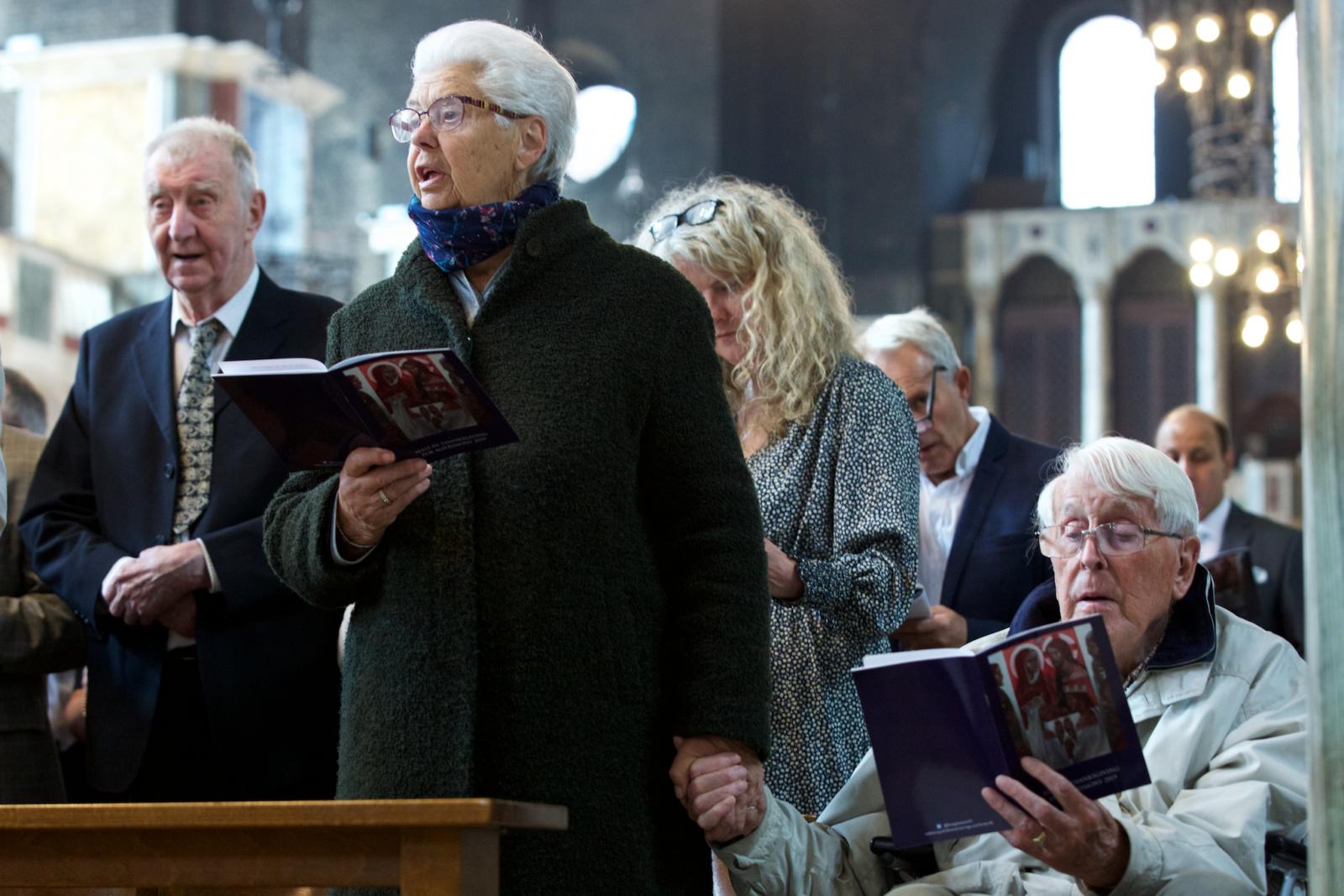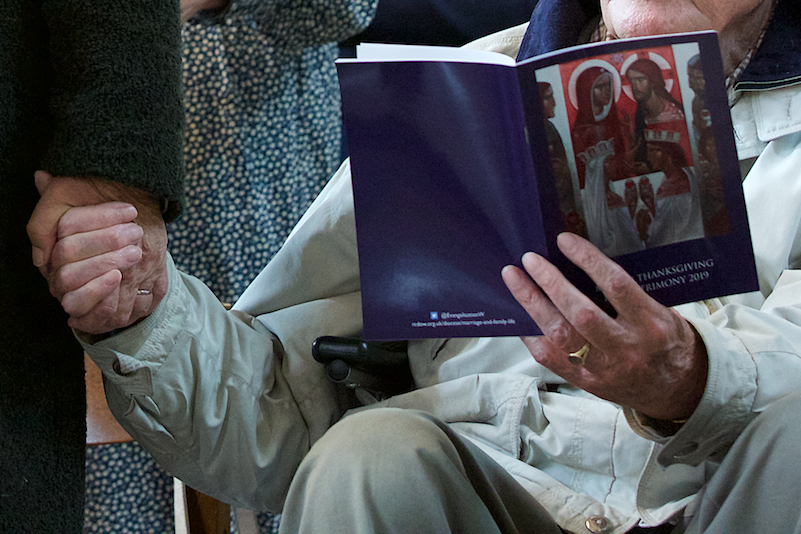By Reverend Roger Carr-Jones, Marriage & Family Life Coordinator, Diocese of Westminster
Praying scripture through art is a practice that allows the text to be explored through the medium of a painting or photograph. This Lent we would like to share with you a photograph of a couple taken at the Annual Mass for Matrimony in 2019. It has a quality that sits well with our choice of scripture for a short reflection for engaged and married couples on 1 Corinthians 13 (verses 4-7), as this couple are a living expression of that great hymn of love. This year also marks the 5th anniversary of Amoris Laetitia (AL) with its nuanced and rich teaching on the beauty of married love in Chapter 4 and in addressing the concrete realities of lived experience, not abstract ideas. Therefore, we come into prayer as we are, open to receiving God’s grace to enrich and transform us.
'Love is patient, love is kind; love is not jealous or boastful; it is not arrogant or rude. Love does not insist on its own way. It is not irritable or resentful; it does not rejoice at wrong, but rejoices in the right. Love bears all things, believes all things, hopes all things, endures all things.'
Just as St Paul’s words illuminate the love that exists in marriage, the photograph that accompanies this article reflects the depth and intensity that we can all experience in married love. In particular, I am constantly drawn to this picture, reflecting on the expression of the couple and the way in which their hands are gently intertwined. As such this couple have become, like a great painting, an eloquent expression of mutual love and self-giving. The composition depicts a maturity of love that seems to give flesh to the words of St Paul, reminding us that they are not abstract words but a concrete reality revealed in daily life.

As you reread the phrases of this great hymn of love use the photograph to aid your reflection, to ponder the words and then look for the links to your lived experience of married love. Begin by unpacking each of these phrases: what speaks to you at this moment in your Lenten journey? Allow your memories to float free by firstly looking at the positive expressions of these qualities in your relationship, before turning to and staying with any challenges, and then return, in prayer, to ask for what you need for your onward journey as a couple.
I am held by the words ‘Love is patient, love is kind’: being patient is to learn that our love is not always perfect. How often have we been we weighed down by trying to live out other people’s unrealistic and idealised views of marriage, or our own expectations, only to discover that love grows through the little gestures. Looking at the couple in the photograph can provide the backdrop, through imagining their story, for us to reflect on our own. What would we want to share with God in this time of prayer?
Pope Francis reminds us that ‘Love always has an aspect of deep compassion that leads to accepting the other person as part of this world, even when he or she acts differently than I would like.’ (AL 92)
If we turn to the final lines, what again, holds your attention and where have you experienced this being made real in your own relationship?
Love bears all things, believes all things, hopes all things, endures all things. How has our mutual love freed us to become ourselves? St Ignatius of Loyola tells us that ‘Love is shown more by deeds than words’.
As part of our Lenten practices, where might we want to express our love for our spouse more deeply? Where, as an engaged couple, might we learn from reflecting on the photograph? Do we see “the happiness of giving, the nobility and grandeur of spending ourselves unstintingly, without asking to be repaid, purely for the pleasure of giving and serving”? (AL 94)
Photo: Weenson Oo/Picture-u-net




